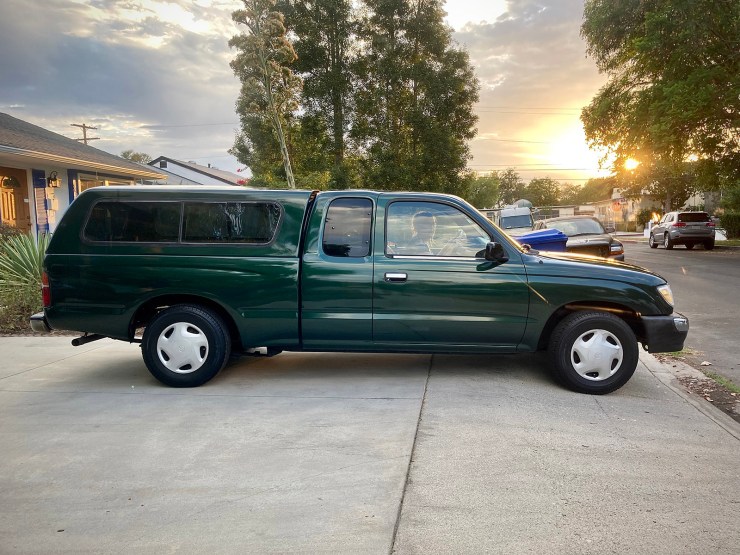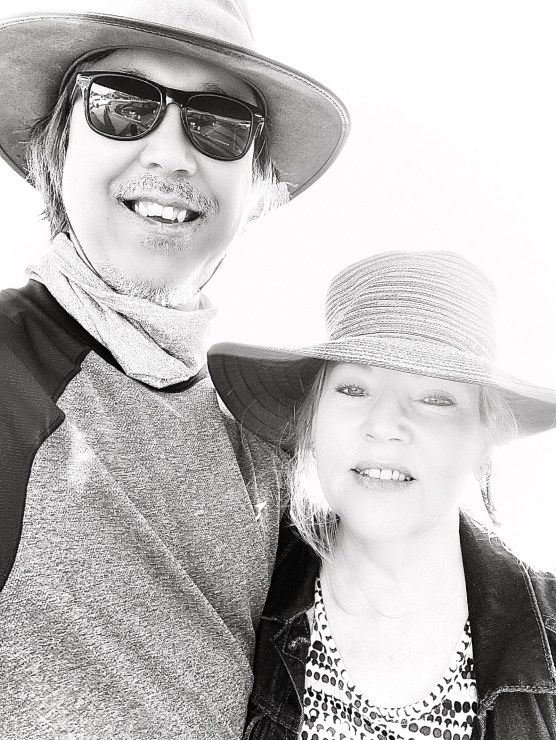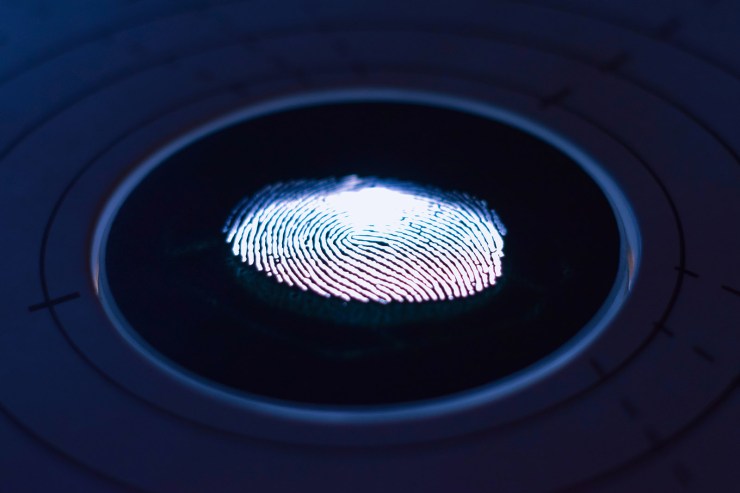It’s a question many photographers, including myself, have been asking for years. Why don’t mirrorless and DSLR cameras utilize smartphone technology and apps?
My friend Mary Wade, using a co-worker’s ring light, had photographed portraits of her fellow employees using both an older DSLR and her new Google Pixel smartphone. “The photos that I took with my phone looked a lot better,” she noted.
After she found that much of that is due to how newer camera phone tech processes the images, she thought, “Sign me up for auto processing!” She’s busy, after all. She writes and does a billion other things at the office.

Four benefits we might get with smartphone processing technology applied to cameras
Cameras on smartphones can take some astonishingly great photos. Given that they use a considerably smaller sensor, just think what images we could take if this technology were applied to much larger, more detailed sensors found in mirrorless and DSLR cameras. Just think what it might look like if we applied that to all that amazing glass. Computational photography would no longer have to battle the physics of smaller sensors and tiny lenses.
1. Instant image processing similar to smartphones
Many of us, like Mary, often like the way modern smartphones automatically process photos. Smartphones, after all, automatically adjust white balance, adjust color, automatically sharpen, create high-dynamic photos and more, using computational photography. It can reduce noise or brighten certain aspects of an image automatically. And it can do it at lightning speed.
For real estate or sports photographers, this could also mean being able to send images to clients faster than ever. Photographers could also send their images to printers much more efficiently as well.
Some photographers, including us night photographers, might not want the camera to process our photos automatically. Or perhaps we might want it to, but also leave the original copy intact so we can process it on our own and compare. Cameras could offer these choices.

2. Bokeh
Portrait Mode in iPhone or Android, creating bokeh, might also be a great application. Being able to use machine learning to automatically focus on eyes (yes, I know many mirrorless cameras already do this) while creating a creamy bokeh might be good.

3. Top Shot
Mirrorless cameras could incorporate technology such as Google’s Top Shot. For instance, You might take a photo where one person blinks. Top Shot to the rescue. Top Shot will work to select the best shots through utilizing a three-second video and on-device machine learning, taking into account open eyes or other factors such as smiling or whether the subjects are looking at the camera, and create a photo for you.
4. Capturing life experiences in three dimensions
iPhone has already rolled out a LiDAR scanner and app. This allows you to take night mode portraits, video-based Portrait Mode, and low-light bokeh to new heights. But coupled with machine learning, it promises more, such as 3D photography, augmented reality, and of course, continually improving bokeh for day portraits.
The idea of capturing your child’s first birthday or your wedding using LiDAR to create a three-dimensional documentation is intriguing. Much of the issue with LiDAR so far has been lack of resolution. However, quality lenses and large sensors may offset this.
5. Combining elements
Perhaps machine learning might be applied toward combining qualities not physically possible in a lens. Could we have a weird 400mm fisheye? Or a 180-degree wide-angle that blurs like a Lensbaby?
Using smartphone OS and apps on cameras

I would love to see my cameras with larger screens and sporting operating systems such as the ones found in our smartphones. Wouldn’t it be particularly powerful if a camera had the ability to use apps such as Clear Outside, PhotoPills or apps that offered more specific controls over the camera, such as exposure ramping (gradually changing your camera’s settings) for time-lapses? The mount just reels at the amount of control, information and ease of operation you could have.
Going further, one could also have photo editing apps in-camera. One could use Photoshop Express, Lightroom, Snapseed or many others.
Two cameras that may bring us closer to smartphone-like technology
1. Alice Camera
Alice Camera, currently in development, shows promise. This device promises the experience of a smartphone coupled with the capability of a high-end mirrorless camera. Alice is an AI-accelerated computational camera with a high-resolution four-thirds sensor and interchangeable lens. You may instantly stream and post in 4K to Twitch, YouTube, TikTok, Instagram or Facebook easily.
Unlike previous smartphone attachments such as lenses, this is a full slim-lined camera where you slide the smartphone on so both are integrated. It feels more like the smartphone is attached to the camera, not the other way around.
2. Yongnuo YN455
Yongnuo is perhaps best known in the United States for producing inexpensive flashes, lenses and other accessories. But they did begin manufacturing cameras incorporating a smartphone with traditional camera functions, running an older version of Android.
Now, Yongnuo has submitted a patent for a modular mirrorless camera. And it’s also announced a new camera, the YN455. Like its predecessor, the not-fully-realized YN450, the YN455 incorporates an Android operating system. Yongnuo says that it will have a micro four-thirds sensor, cellular 4G and Wi-Fi. And yes, you guessed it, that means that like Alice Camera, you may also share straight to social media easily.
There is no news on when this will be released or whether it will be available outside China. If it’s as good as it seems, you might want to begin making friends with someone in China now so you can get your mitts on this.
Security technology in cameras

Cameras could also incorporate smartphone technology in other ways.
Canon has already patented a fingerprint sensor on not only the camera but also the lens. What security implications could this provide?
Beyond security, the sensor might also be able to instantly load custom presets for particular photographers. This obviously has some downsides, such as identity failure or slowing down someone from using the camera. But perhaps this sort of technology could be activated only during certain times.
Tracking your camera
If a camera were running iOS or Android, perhaps we could also track cameras. This could be valuable if the camera is lost, stolen, or left in the last Lyft car we took.
I once came across a night photographer in Mesquite Dunes in Death Valley National Park. “Have you seen a camera anywhere?” He continued frantically searching.
Now, if you’ve been to Mesquite Dunes, you know that it’s quite possible for miles of sand dunes to look similar after a while. This would be exponentially compounded at night. But if you could use something similar to a Find Your Phone app, perhaps you could greatly narrow down the location. Perhaps you could make it emit a sound. After all, most cameras already have GPS devices on board.
What’s the holdup?
Why haven’t the largest camera manufacturers, such as Sony, Nikon, Canon and others not fully embraced the sort of technology in smartphones that seem intuitive to just about everyone? Why is this left to smaller companies such as Alice Camera and Yongnuo?
Major camera manufacturers seem to mostly produce incrementally better cameras with each generation. But they seem reluctant to incorporate smartphone technology. Rarely if ever do we see operating systems with the ability to use apps. With sales of mirrorless and especially DSLRs dwindling, this makes their decision all the more puzzling.
What smartphone technology would you love to see on a camera?
Tell your story with the second annual Visual Storytelling Conference!
Experience four days of interactive, online training sessions featuring a range of educational content with experienced photographers and content creators. This free event kicks off with a series of technical boot camps to build essential skills, followed by live, online sessions on photography, video, business and social media. Join live from March 10-13, 2022!
